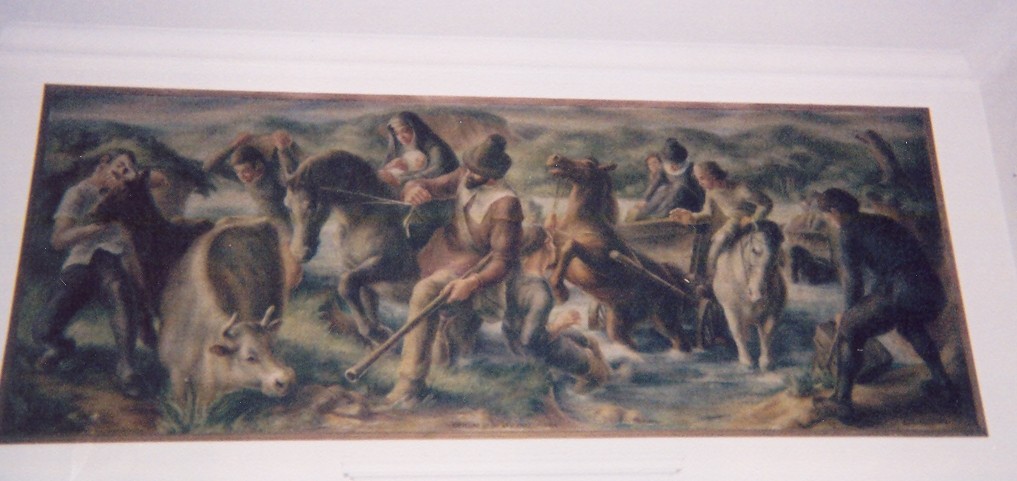By Dan Shine
Voice Columnist
West Haven’s Centennial
Part III
See: Part 1 | Part 2 | Part 4 | Part 5 | Part 6

Anyone who visits the Post Office on Campbell Avenue can look up and see there in the lobby a mural painting—an artist’s conception of the first white settlers entering in 1638 what would initially become called the West Side, and later on West Haven. At first they would ford the West River each morning to farm the immediate area, and then return to the relative safety of New Haven before nightfall. Within months, a footbridge facilitated their passage, and in 1641 a cart bridge took its place.
The area they would call West Farms was covered with marshes, dense woodlands, meadows and low hills made of shale. It was then inhabited by Quinnipiac Indians in three settlements.
The land was initially divided by the General Court of New Haven Colony into four large sections or quarters. The first and largest quarter, and the first homestead was held by Captain George Lamberton, the ill-fated captain of the Great Shippe. At the time, his land became the largest plantation in the New Haven Colony. In a nearby meadow, wild asparagus beds were discovered: this asparagus was harvested and sold to residents of New Haven, thus becoming West Haven’s first cash crop.
The average farm amounted to 70 acres—land which must be cleared in order to be farmed. Using an axe and a team of oxen, trees were felled and removed. Stumps were dug out and field stones were removed; it was backbreaking work. The average area cleared for use was 4-5 acres per year. By 1650, most farmland had been depleted of trees and usable timber. Crops coming from those farms once they were prepared were corn, beans, wheat, rye, poultry, beef, pork and mutton.
The New Haven Colony was a theocracy from the very beginning: the colony was governed by the authority of the Ecclesiastical Body, and these were resolute Puritans with a strong sense of civic responsibility. As members of a religious state, all West Haveners were expected to attend worship, as well as monthly town meetings in New Haven. In addition, adult males were expected to serve in the local militia, and have firearms, gunpowder and shot in their possession, should the need for armed defense arise. Those failing to have proper and sufficient armaments or failing to attend training sessions were assessed a fine of ten shillings. It is important to note that during West Haven’s first fifty years, there had been a succession of wars with the Dutch, Indians and French, underscoring the need for an armed, capable, prepared militia.
By 1700, West Haven was a growing community of over fifty families in permanent residence. The owners were generally older, with established families and possessed of professions or marketable skills including farming which made them useful to the community.
Our thanks to Peter J. Malia for his assistance with this story.